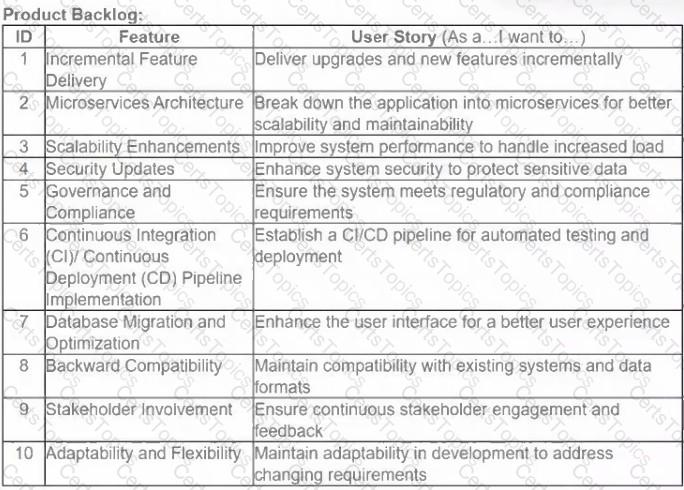PMI Related Exams
PMI-ACP Exam







The PMI-ACP exam assesses your knowledge across seven domains of agile project management:
The PMI Agile Certified Practitioner (PMI-ACP) and the Disciplined Agile Scrum Master (DASM) exams are both agile certifications, but they focus on different aspects of agile methodologies:
During a recent sprint review meeting with stakeholders, the product owner received detailed feedback indicating the critical changes needed for upgrading the legacy system to better align with the latest technologies and user needs. How should the product owner help ensure the product backlog is effectively managed, while helping the team remain focused? (Refer to the Product Backlog Exhibit)

A team working with a new technology faces a significant amount of uncertainty about its ability to deliver stories due to technical issues. What should the team do?
During a retrospective, a team member claims that a specific set of documentation that is continuously updated during iterations is not being used by any stakeholder.
What should the team do?